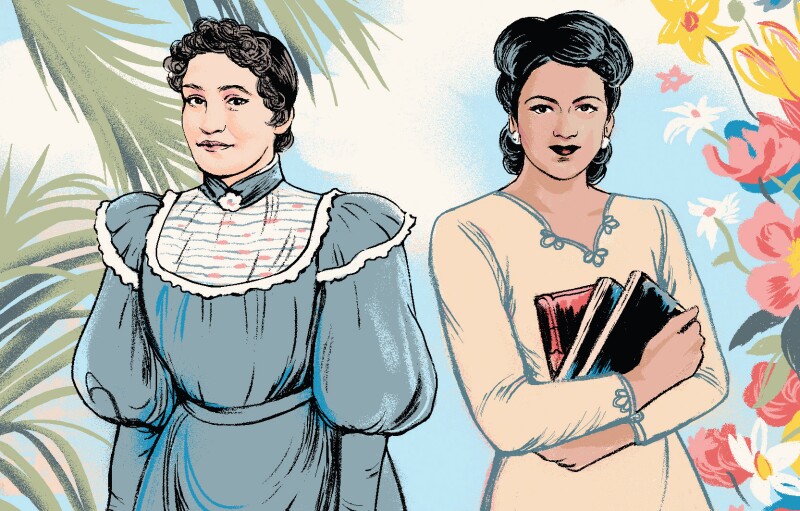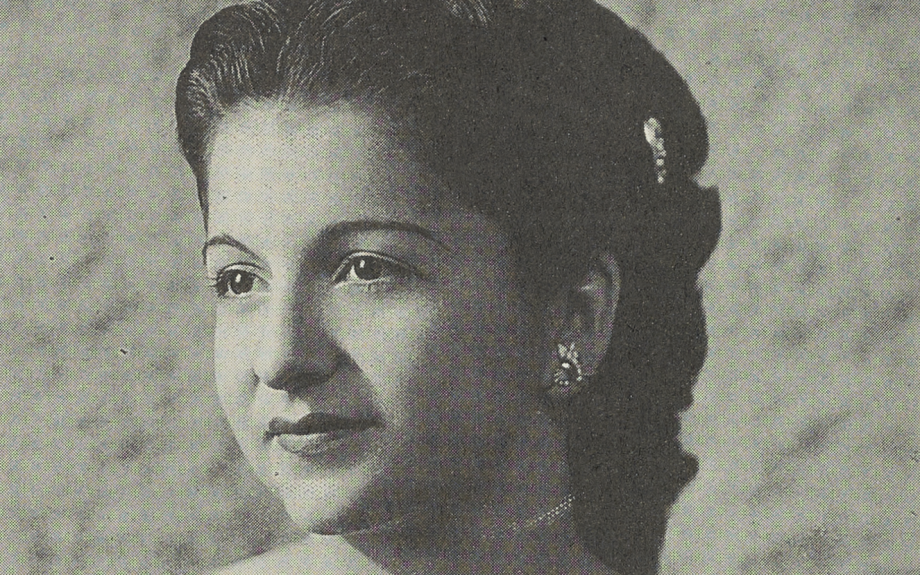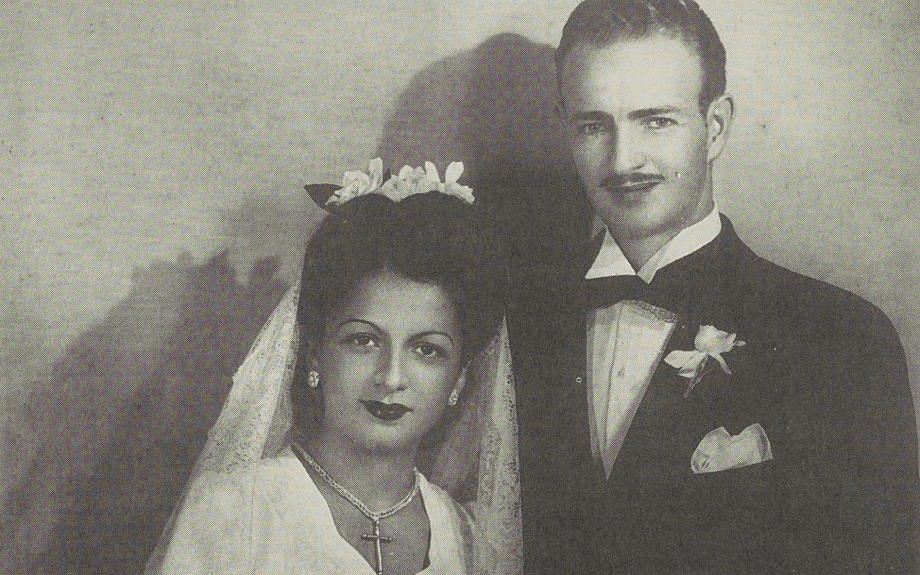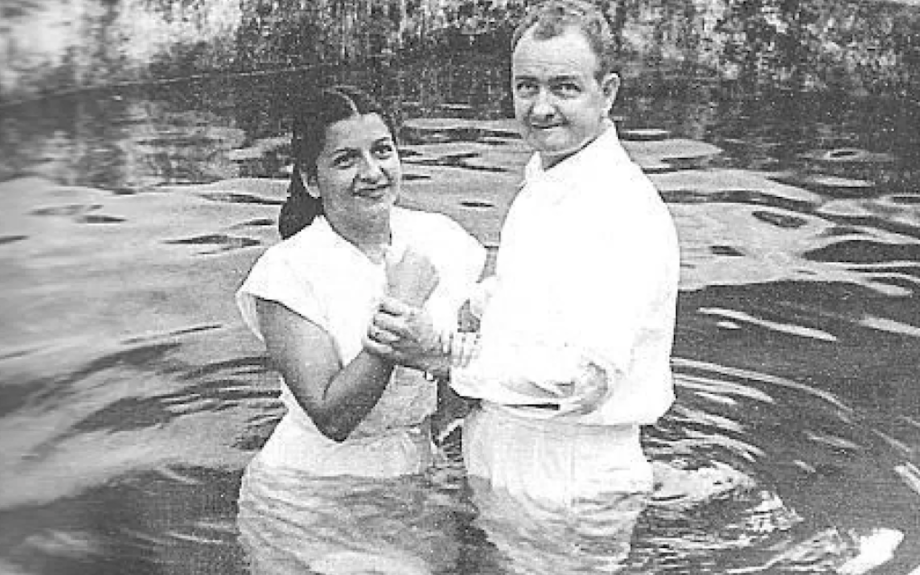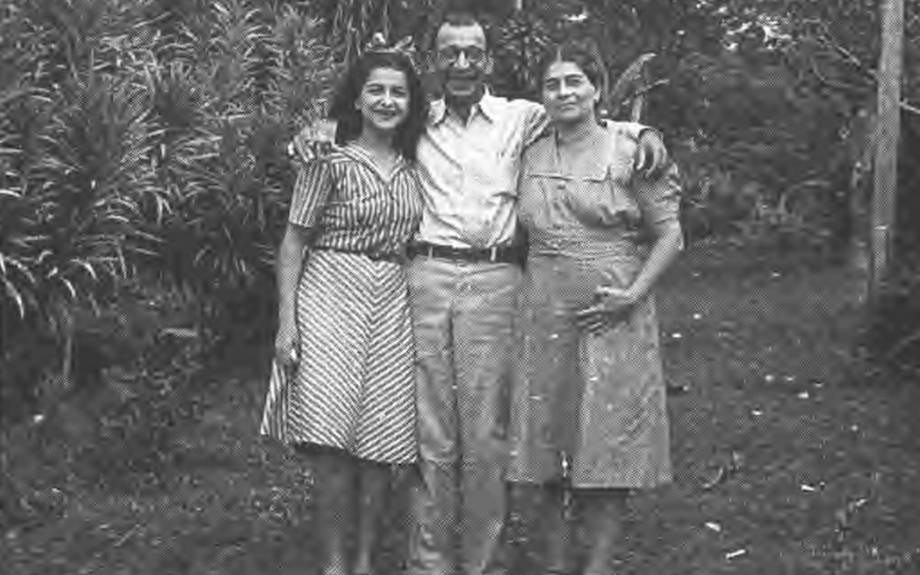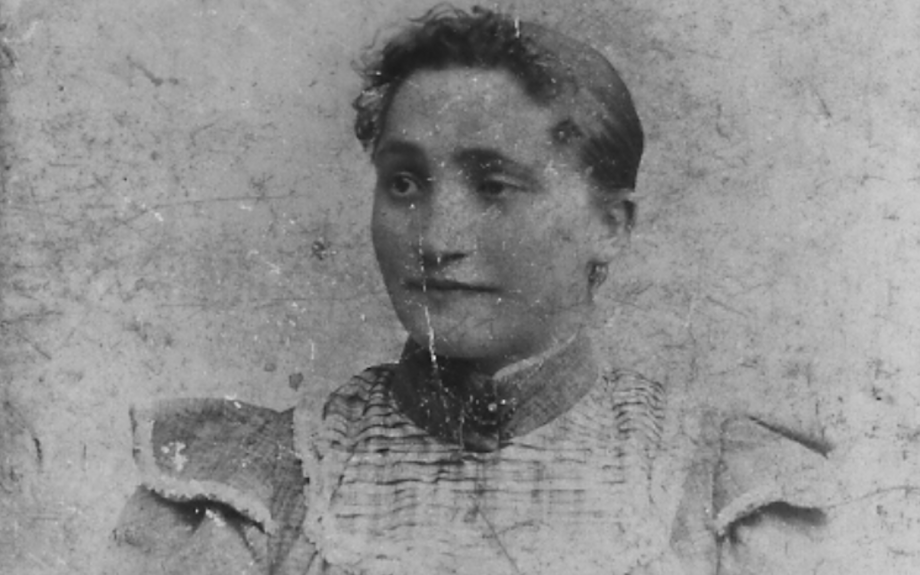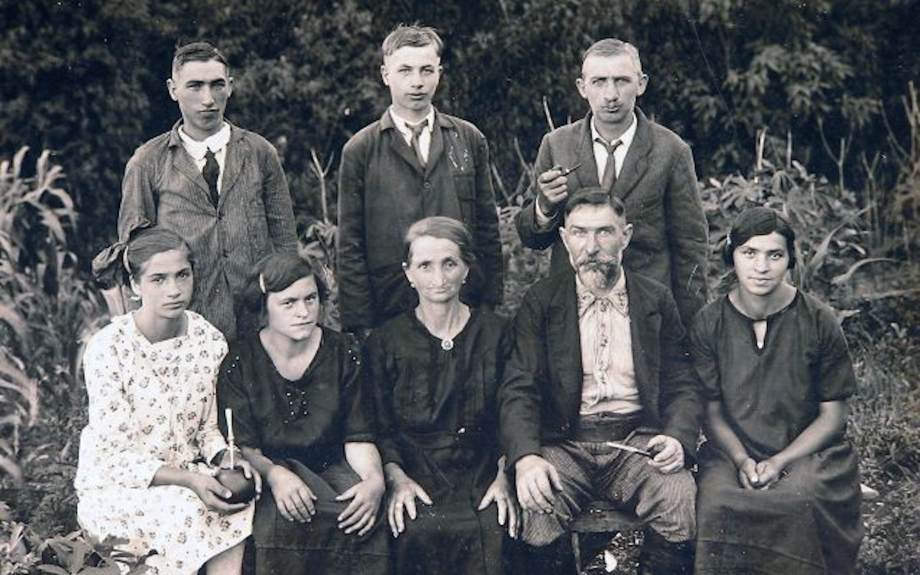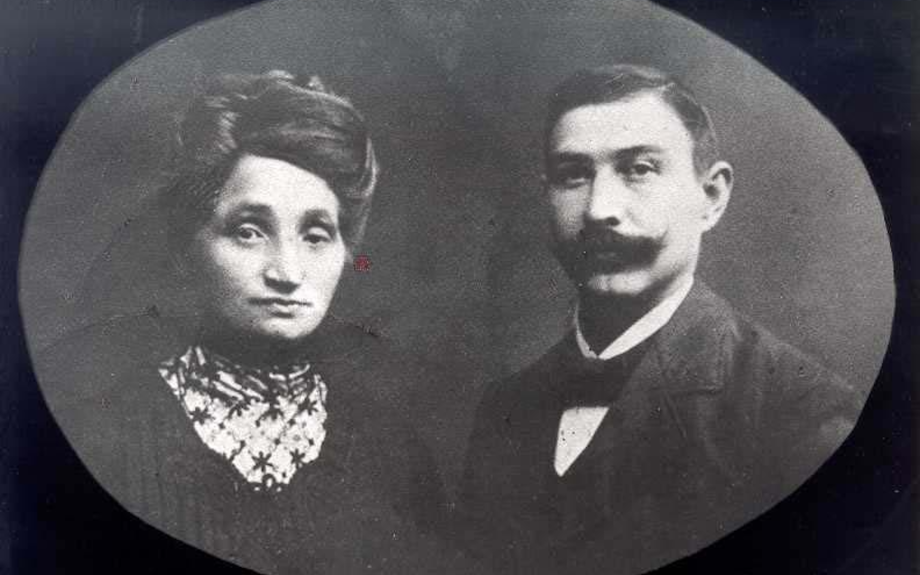Carmen Galvez O’Donnal
Nineteen-year-old Carmen was playing Ping-Pong at a local tennis club when she was introduced to John O’Donnal, an American working in Guatemala as an agricultural advisor for the United States. It took only two months for Carmen and John to fall in love, and they were married on June 9, 1943.1
Carmen admired her husband’s strong devotion and love for the gospel. He frequently told her how he wished the people of Guatemala could learn more about his faith. Little did he know his wife would be the driving force behind making his wishes come true.
On a trip to Salt Lake City in 1946, John visited the prophet, George Albert Smith, and personally asked him if the Church would send missionaries to Guatemala. His plea was heard, and a little over a year later Central America was dedicated for the preaching of the gospel. The O’Donnals invited the first Central American missionaries to live in an upstairs room in their home.
Carmen was determined to learn more about the church her husband loved. She obtained a Spanish copy of the Book of Mormon but found the words and stories difficult to understand. “It doesn’t mean anything to me,” she said.2 John promised her that if she would continue to read and pray, eventually understanding would come.
After five years of carefully studying the scriptures, Carmen said she finally gained a testimony.3 On a sunny November morning in 1948, John baptized Carmen in a private pool in Vista Hermosa, making her the first Central American convert.
Carmen was called to be the Relief Society president of Central America—all seven countries!
The following month, Carmen was called to be the Relief Society president of Central America—all seven countries! She soon noticed how complicated it was for those who had limited experience in the Church to understand the Sunday School lessons, which often used unfamiliar jargon and stories. To solve this problem, she developed and taught adjusted lessons that focused on essential gospel principles to new members and investigators. A visiting General Authority sat in on one of her lessons and observed its effectiveness. His observation led the Church to adopt a new Sunday School class called Gospel Principles. This program benefited the Church and its members worldwide.
Carmen wasn’t done observing and seeking solutions on behalf of Church members in Guatemala. Many of them had to walk on dusty roads for hours or take bumpy, overcrowded buses to their church buildings. In addition, church meetings were spread throughout the day and week, so those long journeys took place more than just once on Sundays. The O’Donnals, and particularly Carmen, understood the needs of Central American Saints, and they had two suggestions: First, change the Sunday meetings to a consolidated meeting block—a schedule in which all meetings were held one right after another instead of at different times throughout the day or week. And second, build more meetinghouses so Latter-day Saints would not have to travel so far to attend church. Church leaders listened to these ideas and piloted the first consolidated meeting block in Guatemala City. And when they began constructing smaller, less-expensive local meetinghouses in Guatemala, the Church had the O’Donnals oversee the project. Both of these pioneering ideas were later adopted Churchwide.4
Throughout her life, Carmen fearlessly used her voice for change, and her ideas and contributions influenced the way Latter-day Saints learn and worship throughout the world.
Auguste Kuhlmann Lippelt
Life was hard for many families living in Germany after World War I. Their country was in debt, their money had become useless, and there was a nationwide food shortage.5 Auguste and her husband, Robert, were raising seven children in these difficult circumstances. Auguste and her four oldest children had been baptized members of the Church after a woman invited them to a Latter-day Saint meeting, but Robert was very unhappy about his family’s newfound faith. He didn’t believe in God and had no desire to learn about the gospel.6
Auguste and Robert struggled to feed their children in postwar Germany. Robert, a professional painter and dance instructor, thought he might find better work opportunities if they left the country. But he also had another motive for moving—he wanted to take his family as far away from the Church as possible. He searched for places where the Church didn’t exist. He thought Brazil, which was all the way across the world—nearly 6,000 miles away—was the answer.7 But he didn’t think through the repercussions of taking five of the Church’s newest and most eager members with him.
Robert moved his family to a small village called Ipoméia in the south of Brazil. Although the Church was absent in Brazil, Robert’s wife was very much present. Undeterred by her husband’s disapproval, Auguste shared her strong testimony of the gospel with her neighbors and wrote to the prophet, Heber J. Grant, in Salt Lake, requesting that missionaries and teaching materials be sent to Brazil—especially to her town of Ipoméia. Missionary work thrived in the little village because Auguste became God’s instrument in sharing the good news of the gospel with other German immigrants in the area.
On Christmas morning in 1925, all South American countries, including Brazil, were dedicated for missionary work. Because Auguste had sent letters to Church leaders, the mission president visited her. He witnessed the great work she had done and assigned missionaries to Ipoméia. Their first order of business was to create the Ipoméia Branch so they could build upon the strong foundation Auguste had established among other Caucasian settlers in that area. Initially, the missionaries mainly preached the gospel to German immigrants, who were among some of the first converts in Brazil.8 Unfortunately, it took 13 more years before Church meetings were held in Brazil’s official language of Portuguese. But once this happened, the gospel flourished among the Brazilian people, and the Church grew faster in Brazil than in any other South American country.9
To this day, Auguste is considered a faithful pioneer in the Ipoméia region of Brazil.
Even though Auguste’s husband had moved her far from her homeland after her conversion, she persevered in Brazil by holding family prayer, leading family home evenings, and holding study meetings in her home.10 Her husband was eventually baptized after Auguste’s death in 1952; his heart was softened when he read the Book of Mormon after having a stroke.11 Her hard work was fundamental in helping the Church to arrive when and where it did. Nearly 100 years after missionaries first preached in South America, Brazil had1,456,238 members, 36 missions, and seven temples. To this day, Auguste is considered a faithful pioneer in the Ipoméia region of Brazil.12
She Did: Ordinary Women, Extraordinary Faith
Notes
- Steve Fidel and Chelsea Warren, “Pioneers of a Different Era,” Deseret News, July 18, 2009, deseret.com.
- “Pioneers in Guatemala,” Global Histories, The Church of Jesus Christ of Latter-day Saints, ChurchofJesusChrist.org.
- Ryan Saltzgiver, “Women of Faith: Stories from Global Histories,” in Latter-day Saint Women (podcast).
- Saltzgiver, “Women of Faith.”
- “Aftermath of World War I and the Rise of Nazism, 1918–1933,” United States Holocaust Memorial Museum, ushmm.org.
- Ana C. Soli, “Brazil: Born of Spiritual Beginnings,” Deseret News, December 17, 2004, TheChurchNews.com; “Auguste Kuhlmann Lippelt,” FamilySearch, FamilySearch.org.
- “Here the Mormons Will Not Find Me,” Global Histories, The Church of Jesus Christ of Latter-day Saints, ChurchofJesusChrist.org.
- Rubens L. DaSilva, “Mormons in Santa Catarina”; Soli, “Brazil”; Celso Sanches and Cristina Sanches, “Roots and Branches of the Church in Brazil: The Eighty Years of the Brazilian Missions,” The Church of Jesus Christ of Latter-day Saints, Brazil.
- “Brazil—Facts and Statistics,” Newsroom, The Church of Jesus Christ of Latter-day Saints, Newsroom.ChurchofJesusChrist.org
- DaSilva, “Mormons in Santa Catarina.”
- DaSilva, “Mormons in Santa Catarina”; “Here the Mormons Will Not Find Me.”
- “Brazil—Facts and Statistics.”

